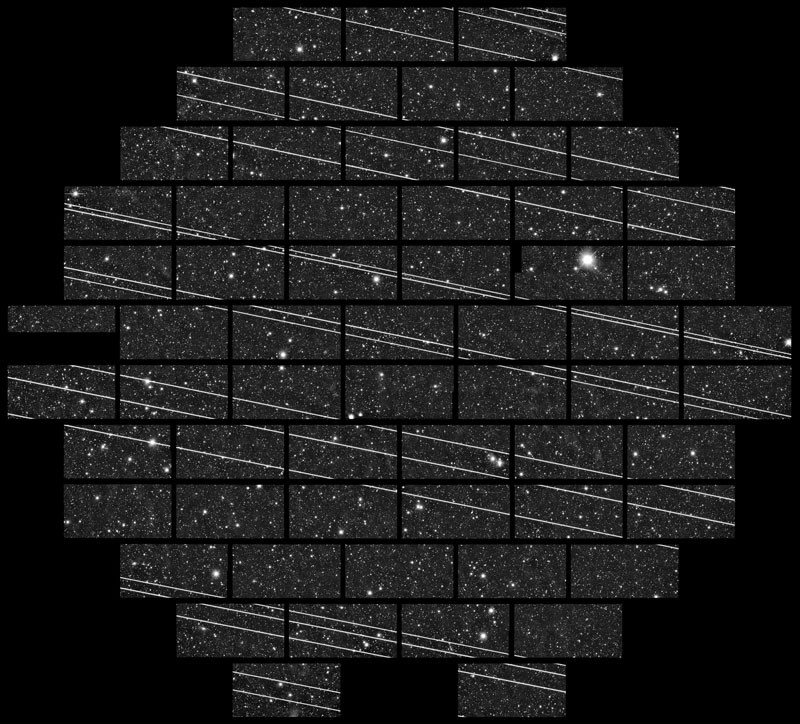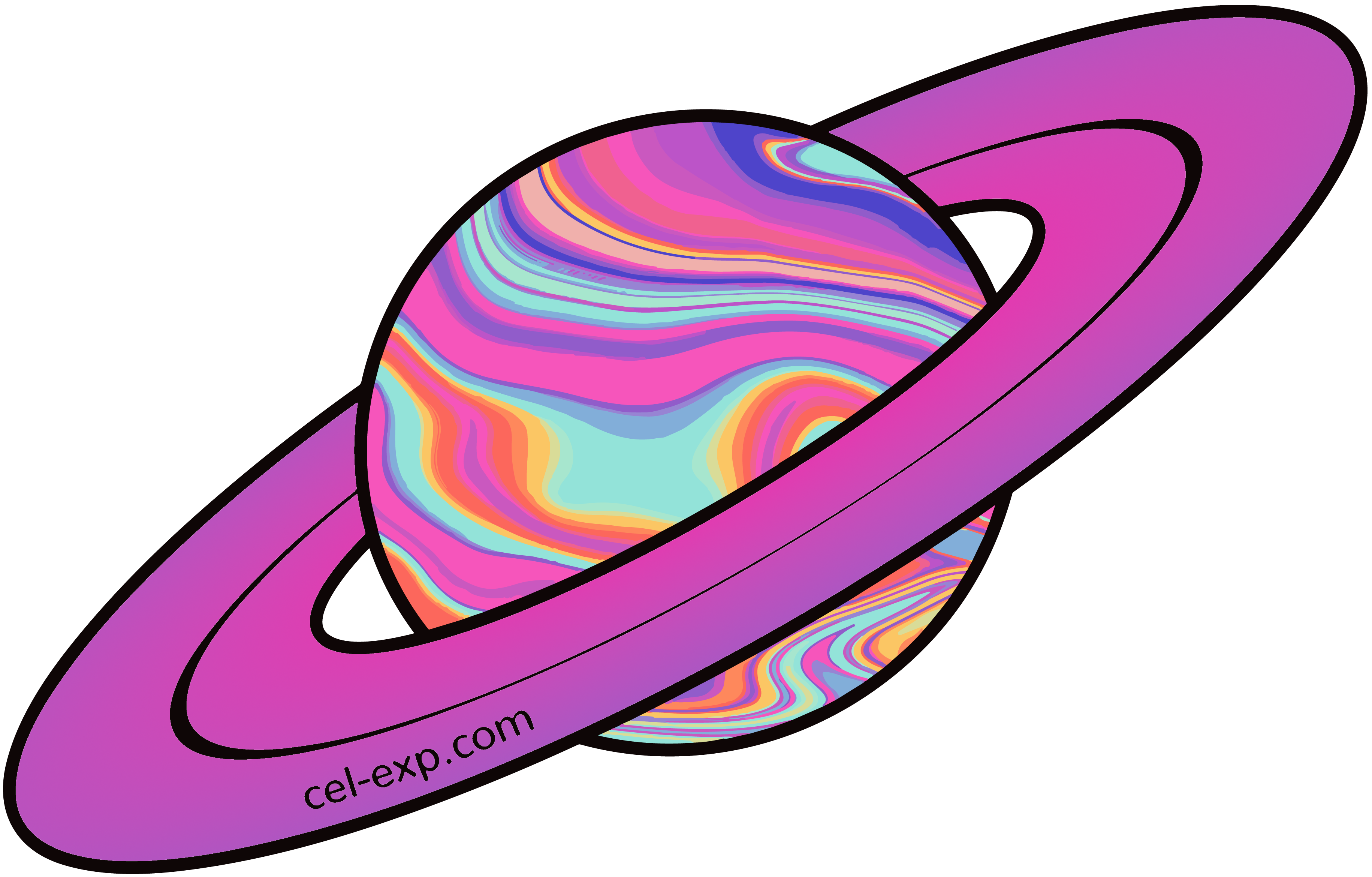SpaceX will launch thousands of internet-broadcasting, communication satellites into orbit over the coming years. One of the costs is the interference with ground-based astronomical observations. Bright satellites reflect the Sun and create bright streaks through images, ruining the data. The radio bands used by the satellites will drown out radio-based astronomy that once observed in those bands–blacking out studies of signs of life and the distant past of the Universe.
SpaceX has embarked on a noble quest to bring affordable, high-speed internet to the entire globe. As long as you have a receiver (not free, but often donated to poor or rural areas), you can tap into the expanding Starlink network. The Starlink constellation of satellites is a cutting edge approach to satellite communication that has never been attempted before. The idea itself is not new, but until now, the cost associated with building thousands of satellites and purchasing just as many tickets to space has been prohibitive. Because SpaceX builds both the satellites and the rockets, the cost of the project, an estimated $10 billion, is manageable for the company’s CEO and world’s wealthiest man, Elon Musk.
The population of satellites in orbit has been growing for 65 years. Why is this just now becoming such an issue? As of March 2022 there are 2,112 Starlink satellites currently deployed, with a total of 12,000 upon completion in 2027. The non-Starlink satellites total about 2,400. The current number of Starlink satellites nearly doubles that number, and will dwarf it in the coming years.
The benefits of global access to the internet and communication are obvious, but of course there are costs. One negative result is the impact made on ground-based, observational astronomy. There are two main issues: bright reflections from satellites after-sunset and before-sunrise interfere with visible-light astronomy, and the constant transmission via radio frequency interferes with radio astronomy.
Visible-light telescopes are placed in locations with the best weather and the darkest skies on Earth. These telescopes rely on these conditions for their long-exposure images to turn out pristine–any atmospheric disturbances or excess light would ruin observations. Unfortunately, in the twilight hours used for observation, satellites cast bright reflections down to Earth. Prior to Starlink, with only a few thousand satellites total, astronomers were able to manage timing and location of observations to avoid the predictable locations of these satellites. With fully-deployed Starlink, the locations are still traceable, but there will simply be too many present to get some wide-field, long-exposure shots.
After facing backlash after the first news of ruined astronomical data, SpaceX made modifications to their satellites to make them somewhat less reflective. This makes the satellites less disruptive to stargazing citizens, but does not actually do anything to help astronomers, as any satellite presence in an image ruins the data.

Another impacted field is radio astronomy. Radio observatories are placed in radio-quiet zones protected by local government to limit radio communication in the area. Because Starlink satellites are trying to bring internet to everyone, everywhere, they can’t be turned off or pointed away from these observatories. The radio bands used by Starlink will saturate these frequency ranges and could completely block observations in those areas.
“This band covers certain types of observations including when we are looking for certain molecules in space that are the precursors of life. Also, the search for and study of exoplanets is done in this band. The radio signals coming from some of the most distant galaxies can also [be in] this band. So [the megaconstellation] interference will affect our ability to see back in time and study certain epochs,” said Federico di Vruno, radio spectrum manager at the world’s largest radio telescope, the Square Kilometer Array Observatory in South Africa.
“Some phenomena will surely go undiscovered as a result of significant interference,” said a 2020 report from the American Astronomical Society.
As more satellites continue to be launched, the situation is getting worse. Astronomers are trying to find solutions to this certain problem. “It creates a lot of systematic errors…. It becomes kind of a mess,” says Meredith Rawls, a stellar astronomer at the University of Washington.
Unfortunately, a new level of interconnectedness on Earth will lead to a reduced connection to space and a big obstacle for certain ground-based observatories.
References:
How satellite ‘megaconstellations’ will photobomb astronomy images
SpaceX’s Dark Satellites Are Still Too Bright for Astronomers

I believe I first saw Starlink a few years back going viral online as it can bring internet access to rural areas in the world. Though it sounds like a good thing, the post brings up the downsides of this large-scale project. Additionally, it is for sure interesting to note how an abundance of satellites can bring about – what sounds like – another form of pollution in space. This was a very informative post!
I’ve heard a lot of mixed opinions on Starlink. I like your approach as to who would be effected by this project, and how that can be harmful. I am curious as to what kind of government and global processes that Elon Musk had to go through to get this approved, or even if he needed that approval. I wonder if this would be worth the cost of the loss of other things that are effected. There truly is a give in take with everything–especially since I believe this project has good intentions.
The FCC is the organization that gives Starlink approval, but they aren’t exactly experts on the global effects of a mega-constellation of satellites– but no one is, as this type of project is unprecedented. There is no way this first attempt was going to be even close to perfect, and highlighting its negative effects on other industries is important for the development of better regulations for inevitable future mega-constellations.
I think Starlink comes with good intentions, and bringing internet to rural and remote areas is an important and worthy goal. I was not aware of the impact this has on science, however. I wonder if there is a way to bring universal internet to everyone without these kind of disruptions.